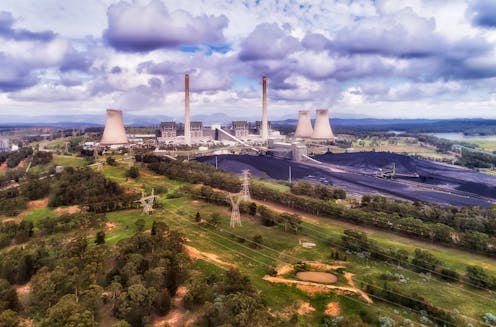Coal plants are closing faster than expected. Governments can keep the exit orderly
- Written by James Ha, Associate, Grattan Institute

The international climate summit in Glasgow aimed to “consign coal power to history[1]”. But while some major coal-consuming countries have agreed to phase out the fossil fuel in the 2030s, Australia is not one of them[2].
Under its recently released plan[3] to reach net-zero emissions by 2050, the federal government modelled a scenario where the electricity sector still burns coal in 2050 – but only a very small amount.
Despite the federal government’s insistence on keeping coal alive, the states are making progress phasing it out. But a messy, state-by-state approach is almost certainly a higher-cost outcome for consumers than if Australia had a credible, enduring climate and energy policy at the national level.
As recent Grattan Institute analysis[4] finds, if the phase out of coal is managed well, we can keep the lights on and slash emissions at low cost.
Coal economics don’t suit today’s grid
Australia exports far more coal[5] than we consume. But we still have 25 gigawatts of coal-fired power stations, 23 of which produce power for the National Electricity Market (the NEM). These coal-fired power stations are ageing – two-thirds of this capacity is scheduled to close by 2040.
Market conditions are making it hard for these plants to stay profitable, as renewable energy has flooded into the NEM in recent years. Rooftop solar has dramatically cut demand for grid-electricity in the middle of the day, effectively eating coal’s lunch.
Read more: COP26: the Glasgow climate summit demonstrates an appetite for change Australia simply can't ignore[6]
On days with abundant wind and sunshine, wholesale electricity prices routinely drop so low they become negative[7], financially penalising any generators making power at those times.
What’s more, coal-fired power stations are less flexible than batteries, hydroelectric dams, and responsive gas-fired generators. This makes it hard for coal plants to ramp up output when electricity prices are high, or ramp down when prices are low or negative.
The economics of coal-fired generators are simply not well-suited to a system with lots of solar and wind-powered electricity.
Coal stations shutting earlier than expected
Poor economics - combined with higher maintenance costs and increased risk of technical failure - make it difficult to justify keeping ageing coal plants open.
So far this year, three coal-fired power stations have had their closure dates brought forwards: Yallourn[8] in Victoria, and Eraring[9] and Mt Piper[10] in NSW.
















